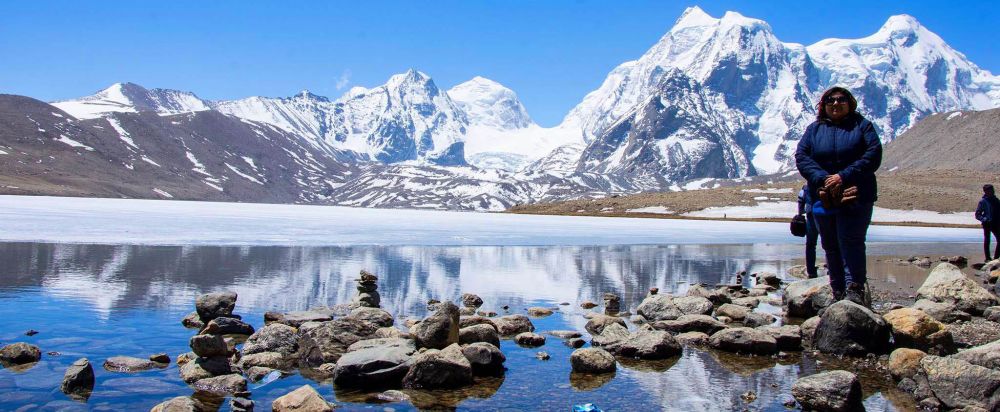

Located in the northern reaches of Sikkim, Gurudongmar Lake is one of the highest lakes in the world, situated at an altitude of 17,800 ft. This sacred body of water is named after Guru Padmasambhava, also known as Guru Rinpoche, the saint who is credited with bringing Buddhism to Sikkim and Tibet in the 8th century. A part of the lake is believed to never freeze even in extreme winters, a phenomenon attributed to the blessings of Guru Rinpoche.
According to legend, upon the request of the local people, Guru Rinpoche touched and sanctified the lake, ensuring that a portion of it remains thawed throughout the year, providing a source of water for the inhabitants. Over time, the lake has become a place of pilgrimage for Buddhists and Hindus alike, adding a spiritual dimension to its natural beauty.
The history of tourism at Gurudongmar Lake is relatively recent. It was not until the late 20th century that it began to gain popularity as a tourist destination due to its remote location and the restrictions placed by the Indian government on travel in this border area, close to China. The opening up of Sikkim to domestic and later to foreign tourism in the 1970s led to a gradual increase in visitors. The construction of roads capable of handling vehicular traffic made the lake more accessible, albeit still a challenging journey given its altitude and rugged terrain.
The Indian Army's presence in the area has also played a significant role in shaping the lake's accessibility. In recent years, infrastructure improvements, along with a greater emphasis on tourism by the Sikkim government, have seen the number of visitors rise dramatically.
Eco-Tourism: Sustainable travel practices are being promoted in the region to preserve the pristine environment. The government and several non-governmental organizations (NGOs) are working towards raising awareness and creating regulations for eco-friendly tourism.
Adventure Tourism: Gurudongmar Lake has become a hotspot for travelers looking for high-altitude trekking and offbeat explorations. The rugged terrain offers a unique challenge for adventure enthusiasts.
Spiritual and Cultural Tourism: With its religious significance and the cultural heritage of the Lachen Monastery nearby, the region attracts visitors interested in spirituality and the local customs of the Sikkimese people.
Photography Tours: The unparalleled scenic beauty of the lake, surrounded by snow-capped peaks and a clear blue sky, is a magnet for professional and amateur photographers looking to capture the raw beauty of nature.
Tourists need to acquire a special permit called an Inner Line Permit (ILP) to visit Gurudongmar Lake due to its proximity to international borders. Moreover, due to the high altitude, it is advised that tourists spend time acclimatizing in Lachen before making the ascent to the lake to prevent altitude sickness.
Gurudongmar Lake is not just a destination; it stands as a testament to nature's marvels and the intertwine of culture and spirituality. The blend of stunning landscapes and deep-rooted spiritual traditions continues to captivate the hearts of those who journey to this extraordinary high-altitude lake. As tourism evolves, maintaining the delicate balance between accessibility and preservation remains a top priority to ensure that the beauty of Gurudongmar Lake endures for generations to come.